It is a natural question, even an intuitive question, to wonder if Bose® has a headset available that compares to the Lightspeed Delta Zulu. BUT is that the right question? Perhaps even better, you might ask, “Can any other headset provide life-saving safety functionality?”. The short answer is no.
The Bose rivalry with Lightspeed is legendary. The A20 and now the A30 are great headsets, but they lack important safety functions that would make pilots safer. Lightspeed also makes fantastic headsets, the Zulu 3 and Sierra. Both are super quiet, comfortable, and durable, but they also don’t provide key functions to make a pilot safer.
As a class of products, headsets are communications devices intended to deliver audio and quieting while providing easy microphone communications. The ANR versions provide that with additional quieting and some additional comfort. They provide both of those very well…enhancing your flying experience.
Lightspeed Delta Zulu is not ‘the next’ headset. It’s the 1st “Safety Wearable” for pilots.
“Safety wearables” are head worn communication products that enhance wearer safety by gathering specific data to track and alert users to dangers. They specifically help them carry out their mission with better and safer results.
Let’s dig deeper into this and learn more about why the distinction of headset vs safety wearable should really matter to you!
Apples to Apples
For over 2 decades, ANR Headsets have allowed pilots to be more relaxed and comfortable in their piloting experience. Various brands have come and gone, as have headset designs and specific features offered. The overall noise cancellation level is always a central one, trying to deliver the best quieting for each pilot and plane. Comfort is another important function – trying to find the “Holy Grail” of fit and wearability. For both of these important user benefits, the variability of all our heads and ears and hearing acuity, in shape and size and sensitivity, meant that various people will experience varying (but honest) conclusions about a given headset’s quiet and fit. Like comparing apples at a store, some are more sweet and some are more tart, but they all taste like apples.
In the premium ANR product space, the question of who’s headset is better has raged on for over a decade now between Bose and Lightspeed.
Most pilots have opinions on both. There remains a constant commentary of which is the best headset. With parity in features and quiet, the only tangible aspect to argue about are comfort and durability…and pilots do! They are both great companies with great products that do nearly identical things in slightly different ways. Both are excellent at “enhancing the flying experience” for all of us. We have different heads, different ears, and of course, different sides to be taken on which headset is best.
Apples to Oranges
Enter the Lightspeed Delta Zulu…a product born out of the legacy of Zulu innovation, quieting, and comfort. While it delivers our best quieting and user functionality EVER, its purpose is bigger and more important than just “enhancing the flying experience”:

Lightspeed Delta Zulu™
Lightspeed Delta Zulu is built for your mission with safety, control, and comfort in mind. Our newest headset includes Lightspeed’s best ANR to date, with the superior comfort and durability you expect from a Zulu, while also introducing groundbreaking new technologies that could save the lives of both pilots and passengers.
Try for yourself! The Lightspeed Delta Zulu has a 30-day Money Back Guarantee
It makes you a SAFER pilot!
With important functions never before integrated into a piloting wearable, the Lightspeed Delta Zulu moves beyond a headset. Remember our definition of a safety wearable: a “head-worn communication product that enhances wearer safety by gathering specific data to track and alert users to dangers”. They help aviators carry out their mission with better and safer results.
The Lightspeed Delta Zulu does that in two very important ways:
- It is always on, always monitoring Carbon Monoxide (CO) poisoning levels in your cockpit. The Kanari® Smart alert system provides programable, audible numerical warnings in your ears!
- It has programable “hearing aid” capabilities to adjust the way ATC sounds in specific frequencies where you may have developed a hearing loss.

One monitors your environment for an odorless and invisible gas that can knock you unconscious. The other allows you to hear every radio call with greater clarity and confidence. Both are customizable for each pilot, and his/her preferences, to insure they fly with greater safety.
Let’s recall the rest of the safety wearables definition: to “help aviators carry out their mission with better and safer results”. In the first 6 months of the Lightspeed Delta Zulu being available for pilots, Lightspeed accumulated many testimonials on how the Lightspeed Delta Zulu has ACTUALLY saved lives, prevented catastrophes, and promoted safer flying. Not only does it make YOU a safer pilot, but it also makes piloting safer for everyone that is with you.
So, that’s the long answer to CAN any headset compare to a Lightspeed Delta Zulu. The answer is NO. In fact, only the Lightspeed Delta Zulu will help make you a safer pilot. So, while the season of wearing just ANR headsets will certainly continue, the dawn of data-centric, cockpit connected safety headsets is just beginning. The continued integration of wearer data into the overall piloting activity is shifting and will continue to drive safer piloting outcomes in the future.
Apples and Oranges are both fruits. Beyond that, the comparisons mostly stop.















Leave a Comment